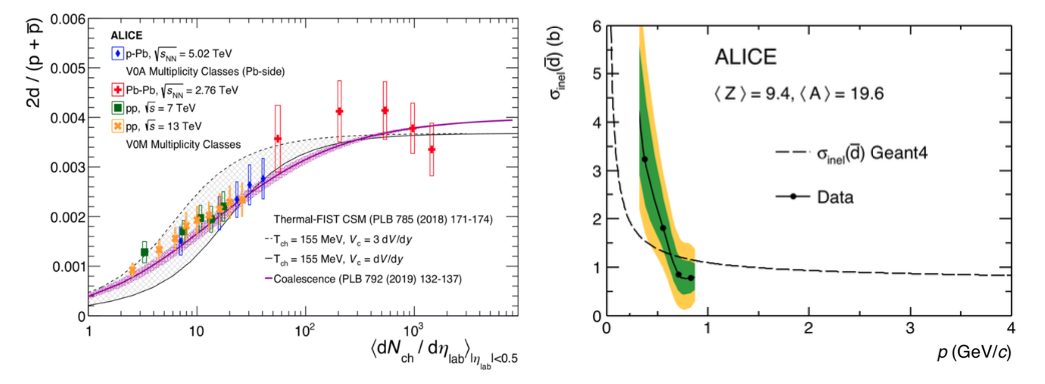
ALICE studies of antinuclei at the LHC help Dark Matter searches in space
Dark Matter (DM) is thought to account for approximately 80% of the matter in the Universe and is searched for in several experiments on Earth and in space (including AMS-02 and GAPS). The detection of low-energy antinuclei is a promising signal in the DM searches in space. Yet, in order to interpret a possible observation, a quantitative understanding of the antinuclei production and annihilation mechanisms within the interstellar medium is mandatory. These mechanisms can be studied using the LHC as an antimatter factory and the ALICE experiment as an antimatter detector. The INFN groups play an important role in these studies. The ALICE collaboration has recently published a measurement of the production of (anti)deuterons in proton-proton collisions, as well as in other colliding systems, providing strong constraints to the production models, shown as overlaid curves in the left panel of the figure, which can then be used to predict the antinuclei fluxes in space. The Collaboration has also measured for the first time the antideuteron inelastic cross section at low energy (right panel), using the ALICE detector as an absorber. The momentum range covered in this measurement is of particular relevance to interpret observations in space in terms of DM candidates. Additionally, these measurements help understanding the low-energy antimatter-matter annihilation processes.
CERN Media Update:
https://home.cern/news/news/physics/fresh-antimatter-study-alice-collaboration-will-help-search-dark-matter
Further reading:
Measurement of the low-energy antideuteron inelastic cross section:
https://arxiv.org/pdf/2005.11122.pdf
(Anti-)Deuteron production in pp collisions at √ s = 13 TeV: